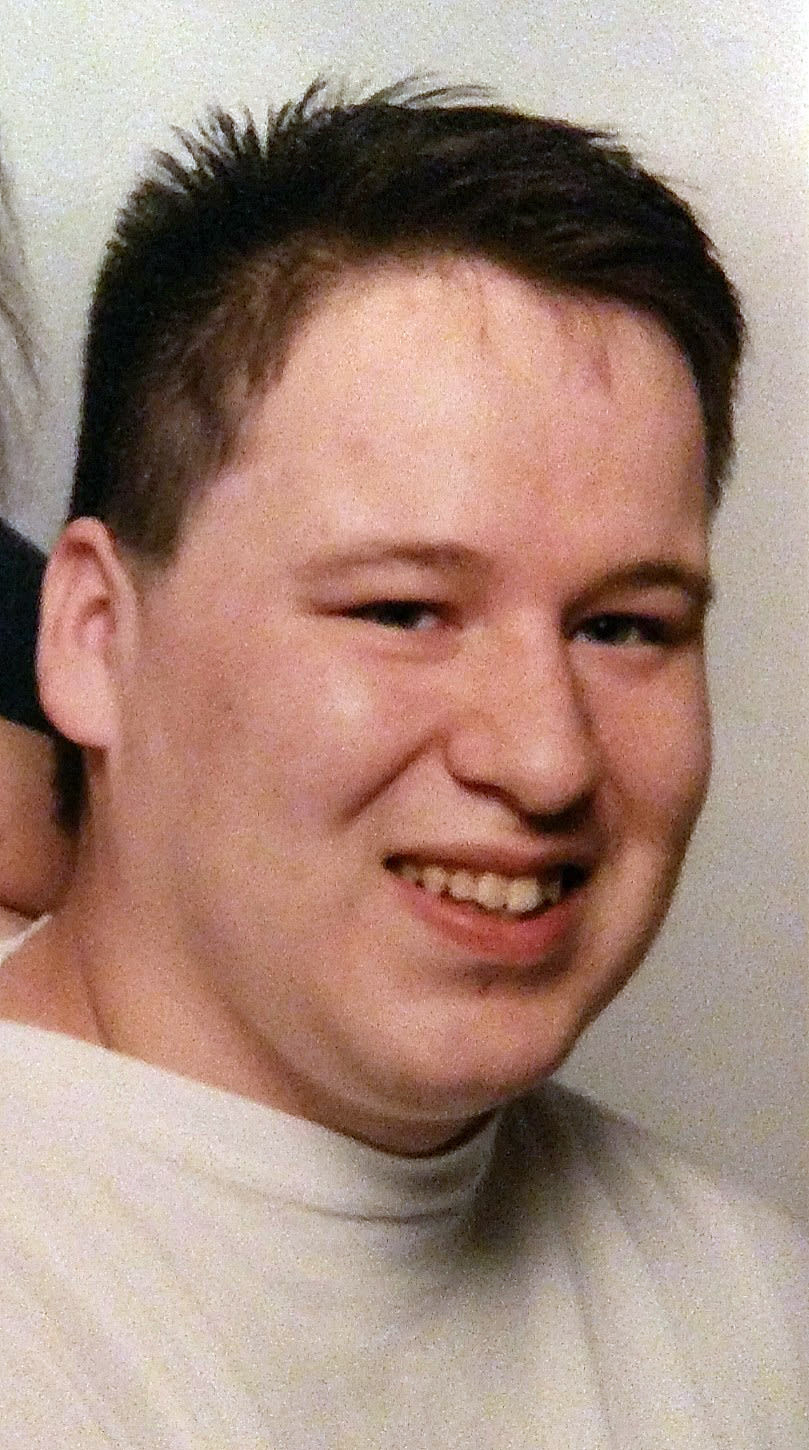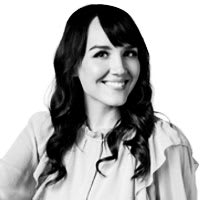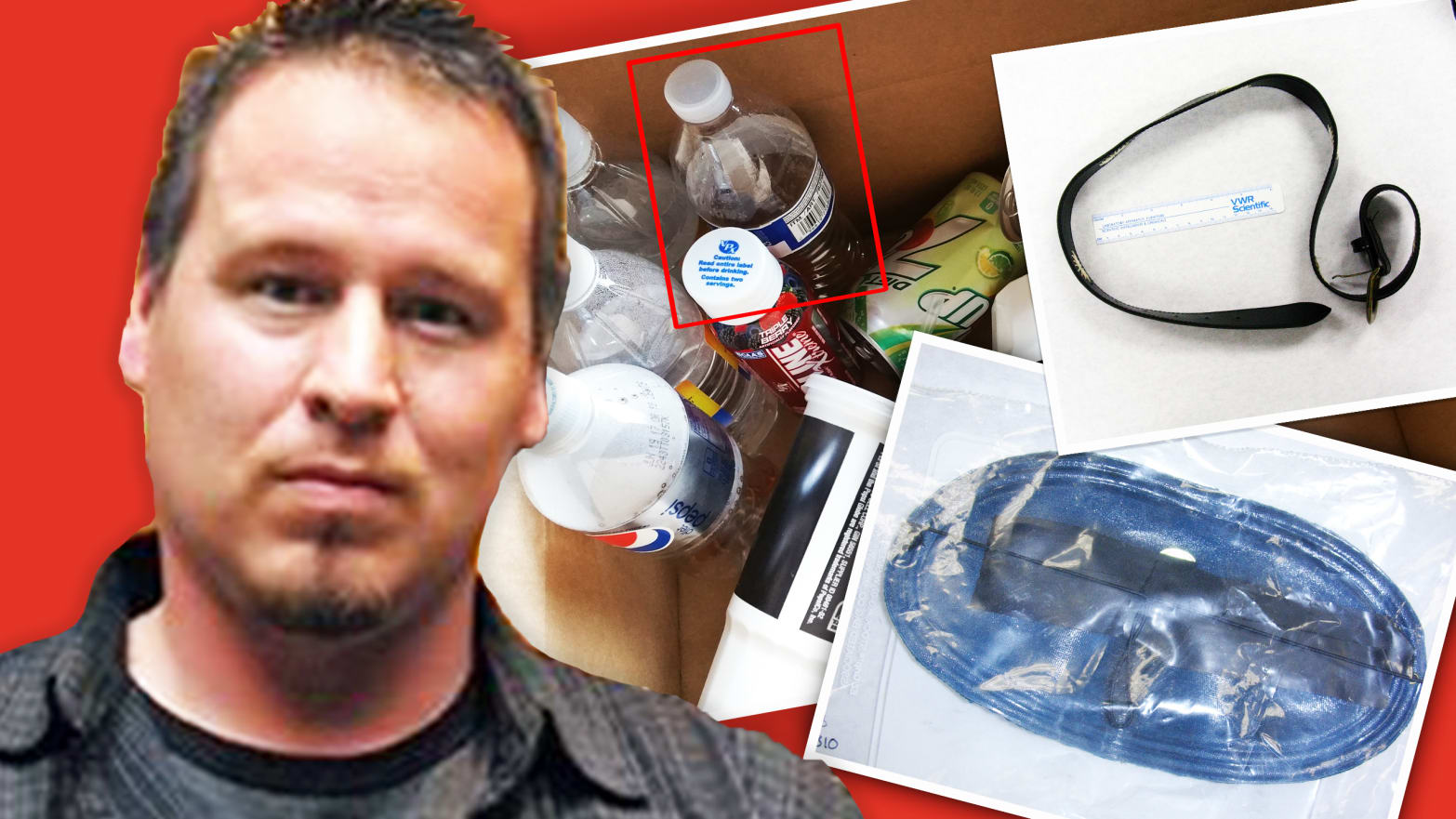Ted Bradford spent nine years in prison for a rape he never committed.
The Yakima, Washington, father of two was forced to register as a sex offender—and even faced a second trial after a judge vacated his conviction when a new round of testing revealed Bradford’s DNA was not linked to the crime scene.
Police and prosecutors, who still believe Bradford is guilty, refiled charges of aggravated rape against Bradford in 2010. He was acquitted.
Bradford has always said he was innocent, despite a 1996 confession that he says was “coerced” after an eight-hour interrogation.
Now, the question of Bradford’s innocence might be answered once and for all. Last month, DNA testing allegedly linked a theater mask used by the rapist to a different suspect: the victim’s brother-in-law, Bradford’s attorneys say.
“This is one of the real tragedies that people don’t talk about when you have [innocent] people who are convicted,” said Bradford’s attorney, Mike Wampold. “The victim is double victimized. Because not only did she suffer this horrible rape, [but] she has to find out that somebody did 10 years for nothing.
“And then the person who committed the crime… the actual perpetrator, it turns out, was her brother-in-law,” Wampold added.

Courtesy www.justiceforted.com
The forensic revelation comes as Bradford wages a legal battle against the Yakima cop who helped to wrongfully convict him. In 2013, Bradford filed a federal lawsuit against former detective Joseph Scherschligt, claiming he withheld evidence and coerced a false confession, among other alleged violations.
The trial judge in U.S. District Court dismissed Bradford’s suit, saying the statute of limitations had run out. The U.S. Court of Appeals for the Ninth Circuit reversed this decision, but the district court again ruled against Bradford. In a May 2016 decision, the judge ruled Scherschligt is immune from prosecution because Bradford failed to prove he falsified reports or used investigative techniques that would yield false information.
Bradford’s legal team appealed the district court’s second decision and is awaiting oral arguments before the Ninth Circuit.
Scherschligt and the prosecution “took the position that Ted was still guilty, despite the DNA evidence and despite the acquittal,” Wampold told The Daily Beast. “We need to find out who the real rapist is. We need to do the work police never did.”
Bradford’s attorneys say they began to suspect the woman’s brother-in-law after reviewing transcripts of her interview with police. She mentioned her brother-in-law four times, including while describing her attacker’s tall and stocky build. (Yakima cops, however, never interviewed the brother-in-law, Wampold says.)
Earlier this year, Wampold tried to sneak DNA from the brother-in-law during a deposition. The law firm laid out gum, fruit, and glasses of water, but he didn’t take the bait. The man even wore a baseball cap and winter gloves to his indoor testimony, and was very careful not to touch anything, Wampold says.
“It was strange behavior and made me suspect him even more,” Wampold said. “We suspect he knew we were onto him.”

Courtesy www.justiceforted.com
A private eye then tried to retrieve DNA from the brother-in-law’s trash, since he was the only male at his Pasco residence. Several garbage days passed, and the man didn’t put out any bags. But eventually, the trash was taken out.
In May of this year, the investigator collected some recyclables and sent one of them to a private laboratory in Virginia. One plastic water bottle had a brown substance believed to be chewing tobacco inside and on the rim.
The results came back last month. DNA taken from the bottle matched evidence left at the scene 22 years ago, Bradford's attorneys say, and it belonged to the woman’s brother-in-law. Such police work, Wampold says, “is something a private civil litigator shouldn’t be having to do. This is something the police should have done 20 years ago.”
Bob Christie, Scherschligt’s attorney, declined to comment but referred a Daily Beast reporter to the trial court’s opinion dismissing the case. Messages left for the Yakima Police Department and the Yakima prosecuting attorney’s office were not returned.
Prosecutor Joseph Brusic told the Seattle Times that he is “duty bound” to evaluate the new DNA evidence and that his office has one year to decide whether to pursue charges against another suspect.
Brusic said he is in touch with Yakima cops and still believes Bradford is guilty of the 1995 rape “based on the information we have to date,” the Times reported.
“Just because DNA is found on some piece of evidence doesn’t mean it was put there by the perpetrator,” Brusic said.

Handout
The Crime
One Friday morning in September 1995, a 25-year-old mother dropped her son off at kindergarten and returned home to do some laundry.
The woman told police she grabbed some clothes from the basement dryer around 9 a.m. and headed upstairs to fold them. She sat on her couch and started feeding her baby his bottle when she heard a noise from the kitchen.
When she peeked around the corner, she saw a man standing there. The attacker, who was wearing a nylon stocking on his head and white cotton gloves, shoved her to the ground. She said the rapist allowed her to put her baby back in his crib before he assaulted her.
The man forced her to wear handcuffs and a theater mask so she couldn’t see him during the assault. He brought her back upstairs to her baby and uncuffed her. When she ran to the crib, he made sure her mask was still on, then tied her belt loop to the crib with a wire hanger.
After the rapist left, the woman heard the sound of a truck speed off, according to a transcript of her interview with Detective Scherschligt.
The woman, in her interview with police, would compare her attacker’s body type to that of her brother-in-law.
“He was really, really tall… broad-shouldered but he was real thick,” the woman said, adding that the man “had on a flannel jacket that was like a dull, red checkered. And I remember thinking… when I first glanced at him, I remember thinkin’ is this a joke. Because his build reminded me of my, my brother-in-law.”
After her initial description of the attacker, the woman was taken to a hospital for a “rape kit.” Bodily fluids were collected, but DNA testing didn’t provide a match at the time, based on the state of testing technology in the 1990s.
Bradford says that during this horrific crime, he was working at a wood-products plant 20 miles away. He’d been dropped off by his wife, who needed the family car to run errands before his morning shift ended around 2 or 2:30 p.m.
Then 22 years old, the couple had two children. Bradford and his wife decided they didn’t want more, so he was scheduled to have a vasectomy that afternoon.
This would prove to be an alibi, Bradford’s attorneys say, but one that jurors didn’t buy.
“Luckily for Ted, this was a distinct day,” Wampold said. “Ted left to get a vasectomy. Everybody remembered that work day because everybody was giving him grief. Everyone remembered ribbing him at work that day.”
Bradford had the procedure as planned and spent the weekend recuperating. He called in sick the following Monday because he wasn’t feeling well.
Meanwhile, Detective Scherschligt drafted a memo stating that one of the victim’s neighbors “observed a subject matching suspect’s description during the same time frame the suspect would have fled the crime scene... He was wearing a red plaid flannel shirt, lined, (quilted) with black Levis.”
According to Bradford’s lawsuit, Scherschligt also wrote that the suspect “was also seen in the area at least once about a week before the rape.”
The neighbor helped police in developing a composite sketch of this stranger, which included a man with light-colored hair covering his forehead. But Bradford, at the time of the rape, had hair that was cut short.
Another neighbor told Scherschligt that she had “flushed a peeping Tom out of her back yard” around April of 1995, the lawsuit alleges. This neighbor said she saw a man aimlessly driving a white vehicle while she was out for walks. She did not, however, provide a description of that man other than that he was a “white male” in a “smaller car.”
The complaint says Scherschligt did nothing to determine the identity of the “peeping Tom” or whether he was a potential suspect in the rape.
In December 1995, the rape victim saw a man who resembled her attacker in her neighborhood. She sped home to get her husband, but by the time they returned to the scene, the man was gone, court papers state.
The woman returned to the police station to complete a sketch, which Bradford’s attorneys say had long hair and looks nothing like Bradford.
But Bradford would soon be on Scherschligt’s radar.
Police cuffed the young father in March 1996 following reports of lewd conduct and indecent exposure in the same neighborhood where the rape occurred; someone jotted down a license plate number which matched his white 1994 Toyota Tercel.
“Bradford confessed to engaging in a series of lewd acts, where he would expose himself to girls and women while walking down the street or driving around in his white Toyota car,” a federal judge wrote in his May 2016 decision dismissing Bradford’s suit.
“He admitted to engaging in this conduct as early as May 1995 and continuing through early March 1996,” the judge added. (When asked about these charges, Wampold said, “It was a long time ago and Ted was young and made some bad choices. He admitted to it immediately and agreed to be punished for that crime.”)
Around this time, while Bradford was under investigation for the misdemeanor charges, cops showed the woman another photo montage—this time with Bradford’s picture. She was unable to identify anyone as her attacker.
In his lawsuit, Bradford says the suspect was described as six-foot-two and “very muscular,” while Bradford himself is about five-foot-seven and not so muscular.
On April 1, 1996, six months after the unsolved rape, Bradford was brought in for questioning in connection to the crime.
Scherschligt and the other detective interrogated Bradford for over eight hours, with most of the interview taking place in an eight-by-nine-foot room. He denied any involvement for the first six hours but was “ignored or rejected by detectives,” the complaint says.
“Detective Scherschligt was just menacing, the way he glared at me throughout the whole day,” Bradford recalls of the April Fool’s Day inquiry. “It was just an intimidation factor that was unbelievable.”
“The tactics that they used on me, it seemed endless,” Bradford told The Daily Beast. “There was nothing I could say to profess my innocence. I told them so many times, ‘I did not do this,’ but they refused to believe me. They told me throughout the day, ‘We are not going to let you deny this any further. You need to tell us the truth.’”
At one point, Bradford agreed to take a polygraph test. “I thought I was fine. I told the truth. They’re going to let me out of here,” the exoneree said. “Unfortunately, when that was done, they said, ‘You failed this polygraph. You need to start telling us what you did.’”
Wampold told The Daily Beast that a polygraph expert later determined that Bradford had actually passed the test, but that detectives had lied to him.

Courtesy www.justiceforted.com
As the hours dragged on, Bradford’s mind blurred. “I had no idea how I was going to get out of this,” he recalled. “I spent a whole day with them. I had nothing to eat, nothing to drink. Toward the end of the day… Detective Scherschligt said, ‘You must be getting tired. You must be getting hungry. If you make this statement I’ll take you anywhere you want to go for dinner.’”
Bradford says the cops kept telling him that evidence was left at the crime scene, and that it would prove Bradford was the rapist.
“I knew I didn’t do it, so I thought to myself, they keep telling me I’m not getting out of this room until I confess. If they test the evidence, they’ll release me. It will prove my innocence. So that’s what led to me making that statement. The false confession,” Bradford says.
According to Bradford, most of his confession was guesswork based on information police fed him through the day. He says he was “piecing together some kind of story just to get out of this room, just to get out of this intense interrogation.”
During the polygraph exam, a Yakima officer revealed additional details of the rape to Bradford, including the victim’s name and the fact that handcuffs were used in the attack, Bradford’s lawsuit states.
Detectives suggested that Braford may have “blacked out” while committing the rape, and allegedly told him they collected physical evidence including samples from the victim, fingerprints, and blood smears on the back door.
Scherschligt leaned back in his chair and warned Bradford that his “goose was cooked,” the complaint says. When the detective asked what was important to him, Bradford replied with “work.” Scherschligt then allegedly said he’d talk to the prosecutor about getting Bradford out of jail so he could return to his job.
Bradford thought his confession wouldn’t matter because he believed DNA evidence would ultimately exonerate him. After this confession, which defense attorneys say was riddled with factual errors, Bradford was charged with first-degree rape and first-degree burglary.
Scherschligt then revisited the woman’s neighbor who saw a “white male” driving a “smaller” car in the neighborhood. One year later, this neighbor picked Bradford’s photo out of a lineup and revamped her statement to suggest Bradford was the driver.
Her story became more elaborate. For the first time, the neighbor said she saw a two-door Toyota and Bradford watching the victim’s house shortly before the assault.
A jury convicted Bradford for rape and burglary in June 1996, based off his faulty confession that he “probably” committed the crime and the new eyewitness testimony of the neighbor. He was 23 years old and sentenced to 10 years in prison.
The Road to Exoneration
By the time Bradford found the Innocence Project, he had missed watching his children grow up and his wife had already divorced him.
He was at Stafford Creek prison in Aberdeen in 2001 when his brother sent him information about the Innocence Project Northwest. Run by the University of Washington’s law school, the project reached out to Bradford months after he filled out a questionnaire seeking help.
Although the Innocence Project Northwest (IPNW) had taken on his case in 2002, Bradford was released by the time DNA evidence could be retested.
Bradford completed his sentence in 2005 and was forced to register as a Level 3 sex offender, which means he was classified as a high risk to the community. He had to meet with a corrections supervisor once a month and was subject to random searches at his home. “I had trouble finding steady employment,” Bradford says. “The only kind of work I could find was through temp agencies.”
Indeed, Bradford spent four years as a registered sex offender and at one point was arrested for allegedly failing to register.
He knew his fight to clear his name was far from over.
In February 2006, modern DNA testing excluded Bradford as a contributor to any forensic evidence at the 1995 crime scene. The Washington Court of Appeals reversed his rape and burglary convictions in August of the following year.
According to a Seattle Times report, Bradford was the first person in Washington state whose conviction was overturned because of DNA evidence. A three-judge panel ruled that had the jury known the DNA of another man was found on the mask, Bradford likely wouldn’t have been convicted.
But prosecutors didn’t accept Bradford’s exoneration. In September 2008, they refiled and upgraded charges against him to aggravated rape and aggravated burglary. Bradford was arrested and released the next day.
It took a jury just under five hours to acquit the then 36-year-old Bradford in February 2010. According to the Yakima Herald, state crime lab specialists testified that they found unknown male DNA on the mask the victim was forced to wear—and DNA from that male or another person on the woman’s clothing and the hanger used to bind her.
“We believe that Individual B is responsible and needs to answer some serious questions for the police,” said Bradford’s defense attorney, Felix Luna, after the verdict. He was referring to the unknown man, who was called “Contributor B.”
Bradford said that even with his acquittal in 2010, he’s lived the a cloud of suspicion hanging over his head.
“There was certain people who would always doubt it. It was hard having to live with that, even after being exonerated,” Bradford told The Daily Beast. “Because the current prosecutor in Yakima said something still the other day.
“How can they continue with this belief? It should be the end of it. We solved the crime for them. Hopefully this is the end of this whole ordeal and myself and my family can move forward and be happy for once,” he added.
The journey has been earth-shattering for Bradford. When he went to prison, he had two children under the age of 2. “I just missed out on so much. I missed out on my daughter’s first steps, first days of school, birthdays and holidays. That’s time I can never get back,” he said.
Bradford has traveled across the country working with the Innocence Project. He’s also a member of the Exoneree Band, a musical group made up of wrongfully convicted men that was featured in The New York Times last year. The six musicians live in California, Washington, Illinois, and Ohio
“A lot of songs revolve around wrongful conviction and bring hope to possible future exonerees,” Bradford told The Daily Beast. He plays the guitar and bass.
Anna Tolin, IPNW’s director, called Bradford “an incredibly resilient and strong and patient generous person” who’s dedicated his time trying to help correct that injustices that caused his own wrongful conviction.
“It’s a case that is one example of the fallout that we have when tunnel vision infiltrates an investigation, and one suspect is targeted and other leads and evidence is ignored,” Tolin told The Daily Beast.
Once the new DNA results from the mask were revealed in 2005, “one would have hoped there would be an acknowledgement of a mistake, that an investigation would have been reopened and that Ted would be free from this onerous burden of being labeled as a rapist and sex offender,” Tolin added. “That just didn’t happen here.”

